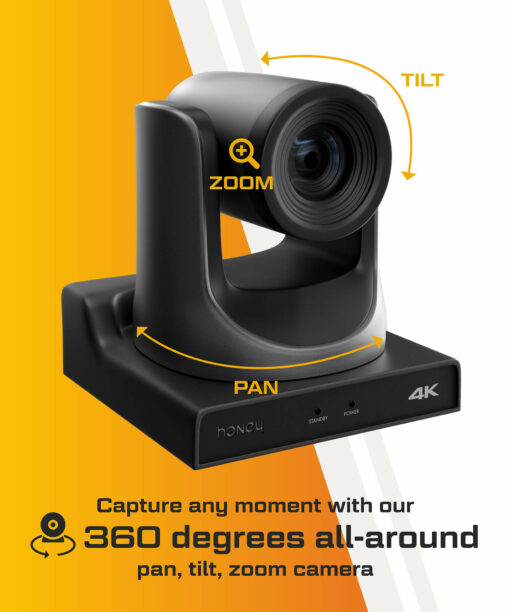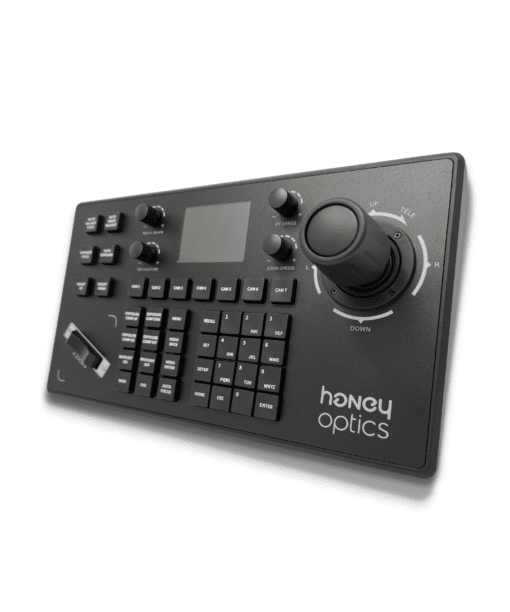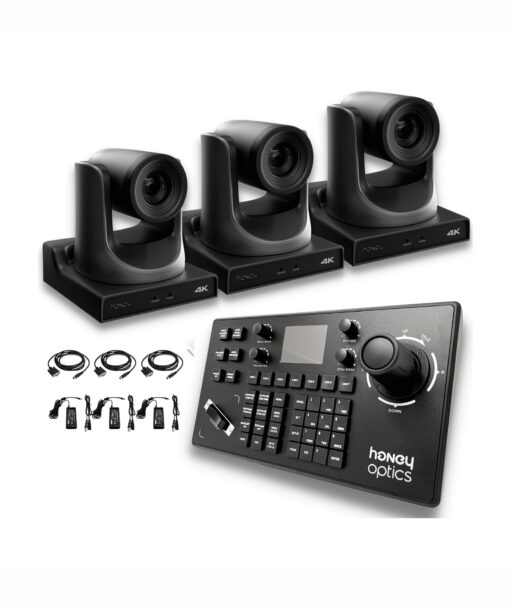Articles
Digital Noise Reduction on PTZ Cameras
PTZ cameras allow you to record and stream in 4K with ease. But in situations where the lighting may not be optimal, noise can affect the quality of your production. DNR, or digital noise reduction technology, can help eliminate or reduce noise effectively and efficiently.
There are two primary methods used in video noise reducer technology: 2D temporal and 3D spatial.
2D DNR and Temporal Noise Reduction
2D noise reduction is the simplest way to reduce video noise. It uses the temporal method for reducing noise. Temporal noise reduction compares pixels and removes ones that don’t appear in every frame. These irregular pixels are considered image noise.
2D DNR temporal noise reduction works best with low-resolution footage. With higher resolution footage, this method is virtually ineffective. While effective, this form of noise reduction can blur images or leave movement trails.
3D DNR and Spatial Noise Reduction
3D digital noise reduction uses spatial noise reduction. Rather than analyzing each individual frame, it uses an algorithm to compare pixels in a sequence of frames. First, it analyzes the pixels in each frame, and then it compares the frames to see which pixels move or change.
Spatial noise reduction is highly effective at isolating pixels considered noise and generally better at eliminating that grainy look common with low-light video. 3D is also the better choice for videos with lots of motion because it does not create motion blur like 2D DNR. Additionally, 3D DNR works well on high-resolution footage, whereas 2D does not.
Choose the Perfect PTZ Camera
Combining 2D & 3D Digital Noise Reduction
Both 2D and 3D noise reduction have their advantages and disadvantages. However, combining these two methods can give you the best of both worlds. You get the efficiency of 2D DNR and 3D DNR’s ability to handle motion.
- 3D DNR can be used to clean up moving objects within a frame.
- 2D DNR can be used to remove noise from static areas of the frame.
The cameras from Honey Optics have both 2D and 3D noise reduction, which allows you to produce clear footage even in low-light situations.
Benefits of Noise Reduction on PTZ Cameras
Is noise reduction really that important? Yes! Reducing noise can:
- improve image quality and allow your audience to view your subject more clearly;
- minimize file sizes for more efficient storage of recorded footage;
- reduce motion blurring during livestreaming when using 2D and 3D DNR.
Noise can be caused by many things, from poor lighting to interference and exposure issues. It can affect the clarity of the footage, cause distractions and have a negative impact on the viewer’s overall experience. By reducing noise, you’ll improve the quality of your production and bring it to a more professional level. In addition, viewers will be more likely to stick around or tune in again when your footage is high-quality.
Fortunately, modern PTZ cameras can take care of noise reduction for you automatically. In addition, our cameras combine 3D and 2D DNR technologies to help you stream or record clear video in high-definition or 4K.










